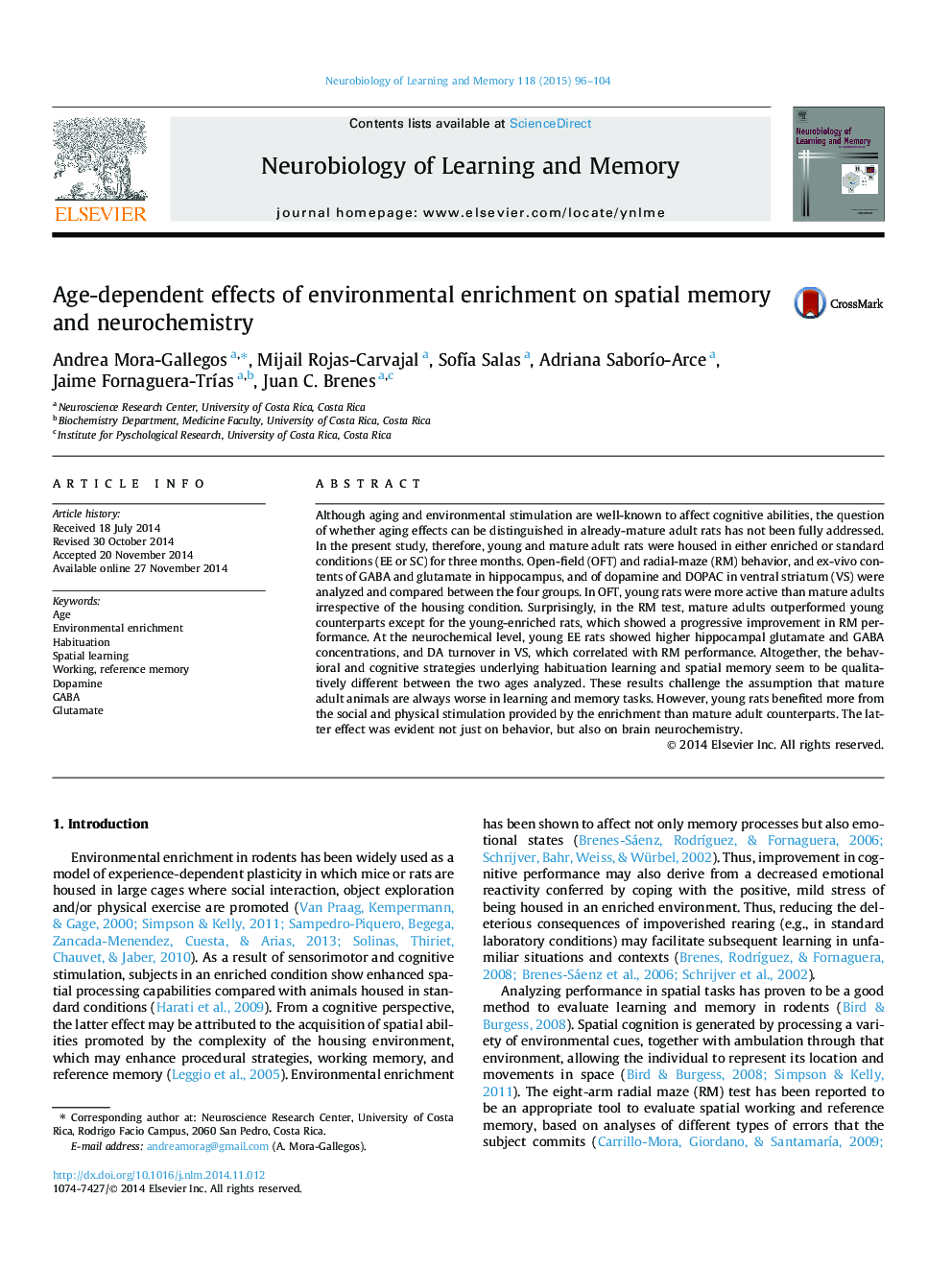| Article ID | Journal | Published Year | Pages | File Type |
|---|---|---|---|---|
| 7299649 | Neurobiology of Learning and Memory | 2015 | 9 Pages |
Abstract
Although aging and environmental stimulation are well-known to affect cognitive abilities, the question of whether aging effects can be distinguished in already-mature adult rats has not been fully addressed. In the present study, therefore, young and mature adult rats were housed in either enriched or standard conditions (EE or SC) for three months. Open-field (OFT) and radial-maze (RM) behavior, and ex-vivo contents of GABA and glutamate in hippocampus, and of dopamine and DOPAC in ventral striatum (VS) were analyzed and compared between the four groups. In OFT, young rats were more active than mature adults irrespective of the housing condition. Surprisingly, in the RM test, mature adults outperformed young counterparts except for the young-enriched rats, which showed a progressive improvement in RM performance. At the neurochemical level, young EE rats showed higher hippocampal glutamate and GABA concentrations, and DA turnover in VS, which correlated with RM performance. Altogether, the behavioral and cognitive strategies underlying habituation learning and spatial memory seem to be qualitatively different between the two ages analyzed. These results challenge the assumption that mature adult animals are always worse in learning and memory tasks. However, young rats benefited more from the social and physical stimulation provided by the enrichment than mature adult counterparts. The latter effect was evident not just on behavior, but also on brain neurochemistry.
Related Topics
Life Sciences
Neuroscience
Behavioral Neuroscience
Authors
Andrea Mora-Gallegos, Mijail Rojas-Carvajal, SofÃa Salas, Adriana SaborÃo-Arce, Jaime Fornaguera-TrÃas, Juan C. Brenes,
